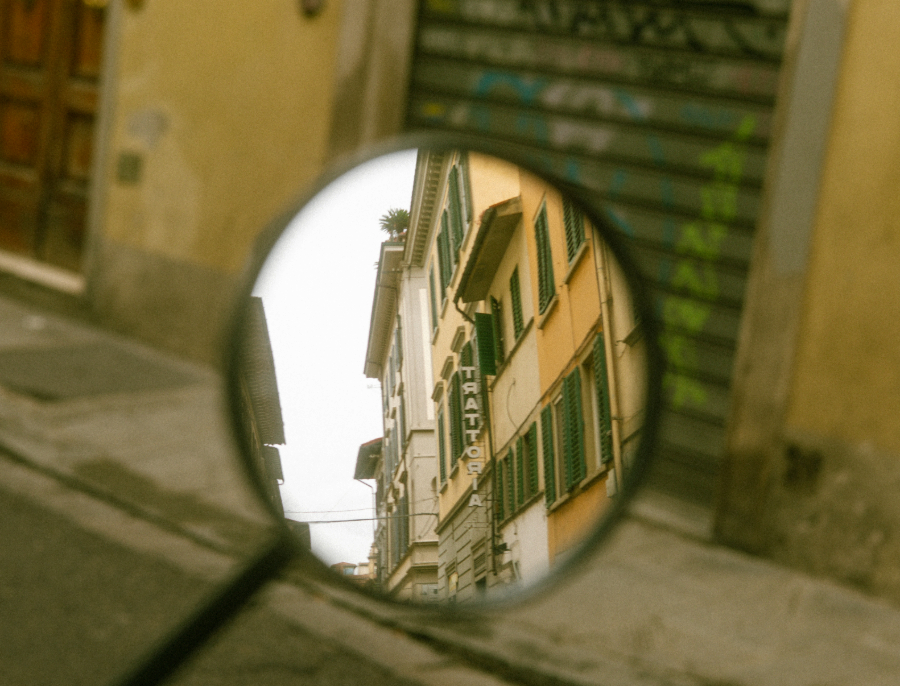 Image: Matisse McMullin/Dupe
Image: Matisse McMullin/Dupe
For many travelers, Italy means ticking boxes: Rome, Florence, Venice, Milan. But as Katie Lee Biegel and her husband Ryan discovered something better on their two-week trip—the country’s soul lives in the places guidebooks skip.
On All on the Table with Katie Lee Biegel, the couple shares what happened when they traded crowds for quiet: small seaside towns, hilltop villages where locals outnumber tourists, and meals that justify the airfare alone.
Katie Lee Biegel’s Italy Travel Guide for a Non-Touristy VacationWhy off-season travel makes Italy even better
Visiting Italy in September meant fewer crowds, a slower pace, and an experience that reminded them of decades past. “Being there in September, it was so quiet,” Katie explains. “It was like what I remember it being like 20 years ago. Night and day difference.”
Ryan doubles down on the strategy. “Off-season, man. Always off-season,” he says, noting that you still get the gorgeous weather, the farm-fresh produce, and the energy without the tourist-packed streets. That simple shift turned already-beloved places, like the town where they married, into an even more memorable home base.
Hidden gems in Umbria
While Tuscany often gets all the travel press, the couple found Umbria to be Italy’s real hidden treasure. “Neither one of us had ever been there. Highly recommend Umbria to people,” Katie says. “It felt like what Tuscany probably was 30 to 40 years ago. There was nobody there.”
They based themselves at Borgo de Conti and explored towns like Solomeo, where fashion designer Brunello Cucinelli rebuilt a crumbling hilltop community into a thriving hub. Ryan admired the philosophy behind the brand, referring to it as “humanistic capitalism,” and praised the way workers are respected and fairly compensated. The factory tour came with trays of mortadella and pastries, thanks to a retirement celebration that their daughter Iris happily joined.
Food, of course, was central to the Biegels’ trip. Katie lights up describing their stop in Perugia. The meal that stuck? The buttered tagliatelle at La Giostra. “I have to say that was one of the best pastas I’d ever had in my life,” Katie says. Those simple details—the quality of Umbrian butter, the richness of local olive oil—made every meal extraordinary.
The Florence debate
No Italy trip feels complete without a stopover in Florence. Still, the Biegels had very different takes on the historic city. Katie found it overwhelming: “It was so crowded with people. I felt like Florence was bursting at the seams with tourists.” For her, the magic of the city got lost in the shuffle.
Ryan, though, leaned into the energy, and both agreed the Four Seasons Hotel was a highlight. With a kids club that Iris loved, it offered a balance between family-friendly travel and adult indulgence.
Restaurants outside the tourist-heavy center also helped restore some of the authentic magic, including Da Ruggero, where, as Ryan notes, “We were the only non-Italian speaking people in that restaurant. Which is always a good sign.”
Rome in 24 hours
The trip ended with a whirlwind stop in Rome, proving that even a single day can deliver unforgettable memories. They made time for Armando al Pantheon, a classic trattoria where Katie swears she had never eaten a better plate of amatriciana, a traditional Roman sauce made with pork cheek and tomatoes.
Ryan, meanwhile, bonded with a waiter in sitcom-worthy fashion, mouthing “vino rosso” across the room and receiving the nod of approval.
As Katie describes it, those little moments—the perfect meal, the friendly exchange, the sunset aperitivo on a rooftop—are what make Italy magical. “This is what we choose to spend our money on, not buying things,” she says. “It’s having experiences. And we both love travel and feel like it enriches our lives so much.”
Read Next

Dining and Cooking